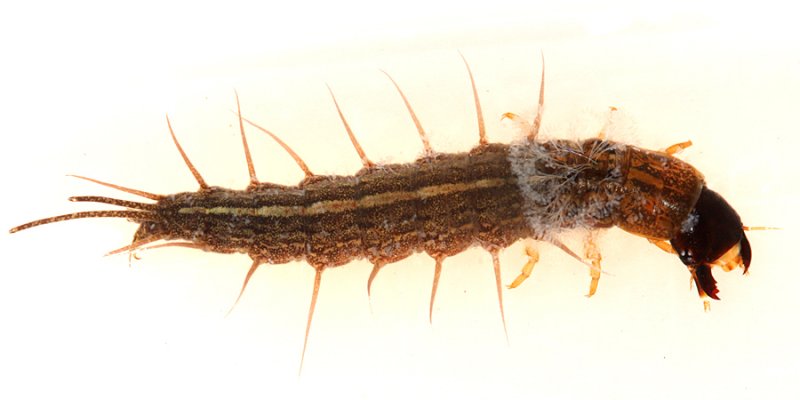Nutrition
Larva
The larval stage of a fishfly's life is when they begin feeding. Since they
are underwater in this stage, larval Summer Fishflies are highly predaceous.
They are carnivorous and tend to eat everything from small aquatic
invertebrates to small insect larvae to even clams and worms (Imms
1977). Larvae are
know to eat tadpoles and minnows along with other aquatic insects.
The larva obtain their food by capturing it in their small mouths while moving about the floor of what ever aquatic environment they are in. Typically, the Summer Fishfly relies on detritus or dead animal tissue, because they lack the large powerful mandibles or jaws of other Chauliodes to capture live prey. Dead tadpoles, minnows, or insects can commonly be found on the lake's or stream's bottom. This feeding habit by the larvae is called saprophagous.
The larva must overcome the physical stresses of living in an aquatic
environment. Water temperatures and water currents play a large role in
whether the fishfly will be able to obtain food. Too cold of a water
temperature will cause the fishfly to become inactive and a swift current
will inhibit the ability of the larva to move about.
The Summer Fishfly digests food in a similar manner to the rest of
Arthropoda. Food is ingested and passes through a mouth with salivary glands
to break down food. It travels down the esophagus to the crop and
proventriculus. The crop stores food until it can pass into the
proventriculus where it is grinded down into smaller particles. From there,
the nutrition passes into the midgut where it is stored until it can be
passed to the hindgut. In the midgut, most of the nutrition is absorbed. The
hindgut houses the intestines, rectum, and anus which expel the waste
products (Hickman et al 2009).
Adult
The adult stage of a fishfly's life marks a large shift in eating habits.
Instead of relying on detritus or aquatic insects, the fishfly is now
terrestrial. They convert their diet to strictly plant juices or plant
tissues. This is exemplified by their attraction to sugar water. The
reliance on plant tissues and juices for food is described as phytophagous.
Since adults rarely live longer than a week, not much can be said of their
eating habits. Their digestive system remains unchanged from the larval stage, so the same digestive processes are involved (Hickman
et al 2009).
Back To Top
On to References⇒
Home

